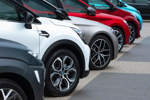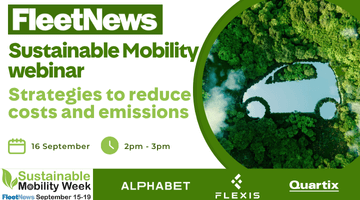
In recent years, a division has developed in the driver training and risk assessment world over what the most effective methods are.
Everyone involved wants drivers to be safer, but there are some very different approaches. Should the training be done in the classroom? On the road? On a skid pan? On a computer?
One thing all these approaches have in common is that they all focus on driving.
But now, a recent addition to the driver training market is a product that, initially at least, doesn’t even mention driving or anything to do with it.
The concept of FleetFit is that a person’s behaviour and reactions affect everything they do.
Therefore it is possible to assess how a person is likely to drive and how much of a risk they are likely to be, without seeing them drive or even asking about how they operate a vehicle.
FleetFit is a product of an Israeli company, CogniFit, and is marketed in the UK by Thomas International.
Tina Janson-Caddel, of Thomas International, says firms strived to use technology to push forward every aspect of their businesses.
So why not driver training?
She says: “We are still talking about traditional driver training as it has been from the year dot.These are usually one-on-one sessions that will determine whether you are a good driver. Why haven’t they moved on?
“Traditional driver training is skills based. It’s done on a one-on-one basis of one or two hours with a driving instructor.
“They will take the driver round the route, chat to them about various things to relax them. It takes the first hour to do that and in the second hour you get a good look at their driving.”
Such training is both time-consuming and costly, Ms Janson-Caddel argues.
“Your driver has to come off the road so productivity is affected,” she says. “It’s also subjective. The driving instructor has no marking criteria to assess your driver against.”
COGNITION
“Research suggests it’s behavioural or cognitive factors that cause crashes,” Ms Janson-Caddel says, “not whether you can turn the wheel or bring the clutch pedal up too fast.
“CogniFit realised that cognitive training has an impact on crash statistics.
“It has found that cognitive skills can be improved through intensive training on a computer.”
CogniFit’s first programme, DriveFit, won the Prince Michael Road Safety Award in 2003. Since then, a fleet-specific product – FleetFit – has been developed to particularly target business drivers.
FleetFit works around the maxim “use it or lose it”.
“Brain cells regenerate throughout life and migrate to areas with the highest needs,” Ms Janson-Caddel says.
“The more something is done the more automated it becomes. The brain must be challenged – you have to take your brain to the gym. A lack of cognitive abilities is related to road crashes and the first step to improving is to find out your level of cognitive ability through assessment. You can then identify the areas you want to work on.”
FLEETFIT
The first aspect of FleetFit is a Personal Profile Analysis (PPA), conducted online in about 10 minutes. Intended to assess behaviour, it’s not the first product available to fleets to do this.
But it’s unusual in that not once throughout the assessment is the road, motoring, vehicles or anything to do with driving mentioned.
“There are a lot of behavioural assessments out there that are driver specific,” says Ms Janson-Caddel.
“The questions there are putting you in a driving scenario – how would you feel, how would you react? They look at aggression, risk taking and so on. But it’s very easy to fake.
“If I know I’m being carefully assessed, I’m not going to say I’m a thrill-seeking speed demon.”
PPA looks at generic behaviour.
The assessee simply picks a range of adjectives from a list that he or she thinks describes them best.
Then complex analytical algorithms go to work and produce a Driver Assessment Report (DAR), which ranks drivers on a risk scale.
The DAR is not seen by the drivers, only by the fleet managers. High-risk drivers go on to do an online cognitive assessment and subsequent training.
The training consists of a variety of exercises taken in 12 20-minute sessions over the internet.
They’re designed to stimulate appropriate areas of the brain, depending on the DAR.
There is also a one-day workshop open to all the high-risk drivers.
“Unless someone can identify where their limitations are and accept them, they will never move forwards,”
Ms Janson-Caddel says. “Drivers identify their own driver risk factors and start to understand their triggers – what makes them get aggressive when being tailgated, for example.
“The course aims to provide the ability to analyse thoughts, emotions, physical feelings and actions in driving situations, how to modify the way they think, feel and react. Each delegate works on their own action plan to remedy issues raised.
“Skills-based training has its place,” Ms Janson-Caddel says, “but no amount of driving will reduce crash rates. You need the skills to drive the vehicles but it’s attitudes that cause accidents.”
Personal profile analysis in practice
To test the claims, I took the Personal Profile Analysis online assessment myself.
As described by Thomas International, there was no mention of anything driving related. I simply had to pick adjectives that I felt described me.
I’ve taken several online assessments before, all of which asked me how I felt in driving situations. And, frankly, I lied a little.
Of course I wasn’t going to admit to speeding or flicking fingers at other drivers.
“I’m a great driver,” I told the system, and it believed me.
The PPA was different. I couldn’t tell which answers would score well and which wouldn’t.
The lists read along the lines of “influential, persuasive, friendly, verbal, communicative, charismatic, gregarious” and so on. I was left with little choice but to be honest.
Normally drivers don’t get a copy of the resultant report but in the name of investigative journalism, I did.
THE REPORT
The DAR rates me as a medium to high risk, and reported, in essence, that I was a lunatic but with a steadiness characteristic that could moderate the madness.
“Phill could be an unpredictable, impatient and impulsive driver,” the report said.
“It is likely that he may be disorganised and inadequately prepared for his driving and other duties, leading to rushed, careless and potentially dangerous driving.
“He possibly will disregard conventional driving rules and courtesies to suit himself.
“Phill may become verbally aggressive, which could impact negatively on his concentration, self-control, tolerance and consideration.
“If directed at other road users, this verbal aggression may provoke an aggressive driving response in return.
“Naturally self-assured, he could knowingly take risks others perceive to be irresponsible and unnecessary.
“Phill is liable to become bored very quickly and hence distracted far more readily than most other drivers, losing his focus and not concentrating fully on the task at hand.
“In favourable conditions, the steadiness characteristic may have a slight moderating influence on the influence characteristic and Phill may become a somewhat lower risk driver.
He could become slightly more reliable, patient and conscientious, may attempt to plan ahead more and follow the Highway Code.
“He may endeavour to be more careful and try to consider the consequences of his actions on other road users. He could make more of an effort to concentrate on the task at hand.”
THE RESPONSE
So is this accurate?
Well, like most men, I consider myself to be a superb driver. Clearly, I’m not in a position to say whether the DAR is right or not.
So I asked the person that knows me best and spends the most time in the car with me – my girlfriend.
“I’d say, actually, that’s pretty accurate,” she said, worryingly.
“You can be impatient and impulsive when driving, especially if we’re running late, and you do disregard conventional rules to suit yourself.
“You can be verbally aggressive towards other drivers and whenever we are in a situation where there could be a risk, it’s always the other driver’s fault in your eyes.
“I wouldn’t say you’re inadequately prepared for driving – you also can be quite careless in general – but I wouldn’t say you’re a careless and disorganised driver,” she continued.
“You get distracted too easily when driving sometimes and you constantly fiddle with the sat-nav and radio.
“You also take unnecessary risks – you have very high confidence in your own ability as a driver, which probably contributes to this.
“However, when you’re concentrating properly, such as when you chauffeur my parents around, your driving becomes far more patient, considerate and careful.
“I think you’re a very good driver, but I don’t think you would deny the report’s findings.
“Bear in mind these are only the negative points so I’m not sure how balanced the view is.
“I’d say there is room for more balance – it has got the risk factors right but there’s no scope to mention your skills and abilities as a driver – for example, good spatial awareness, good technique, good knowledge of the car and ability to get the best out of it.”
So, perhaps I’m not the driving genius I’d like to think I am, but equally perhaps I’m not as bad as the report seems to make out.
It does focus on the negatives, but at the end of the day it’s the negatives that make up the risks as far as fleet managers are concerned.














Login to comment
Comments
No comments have been made yet.